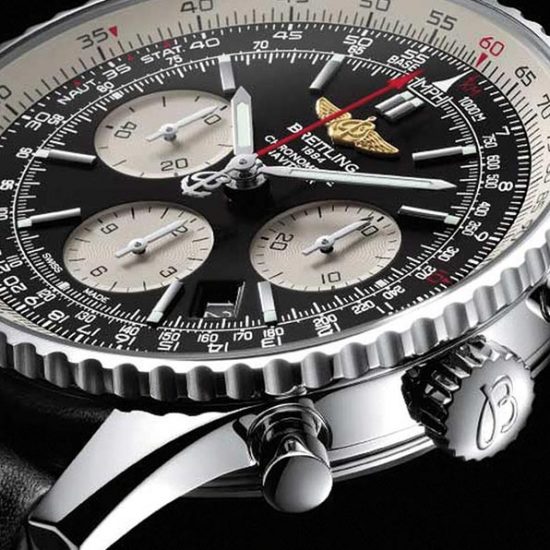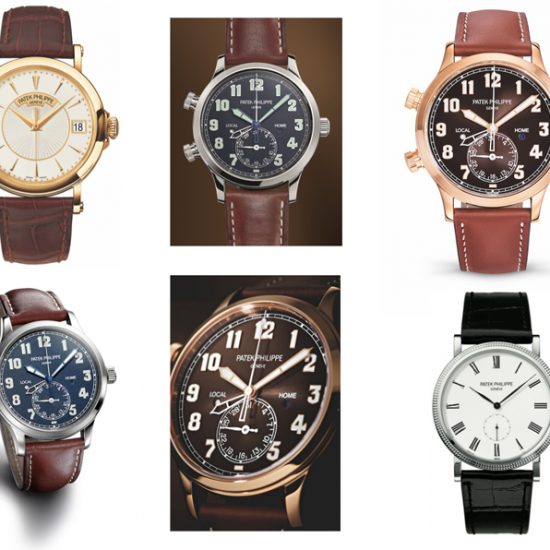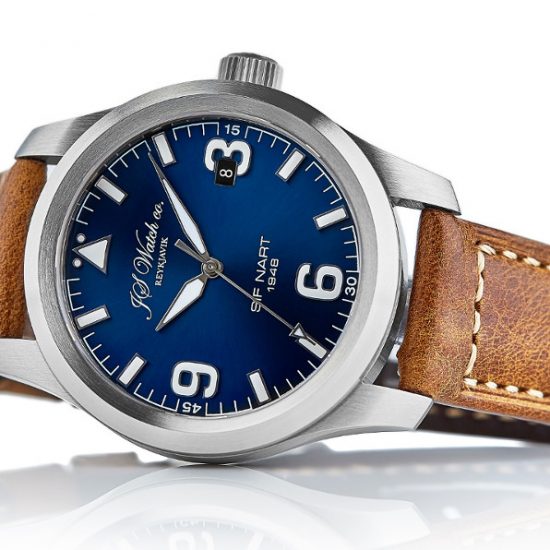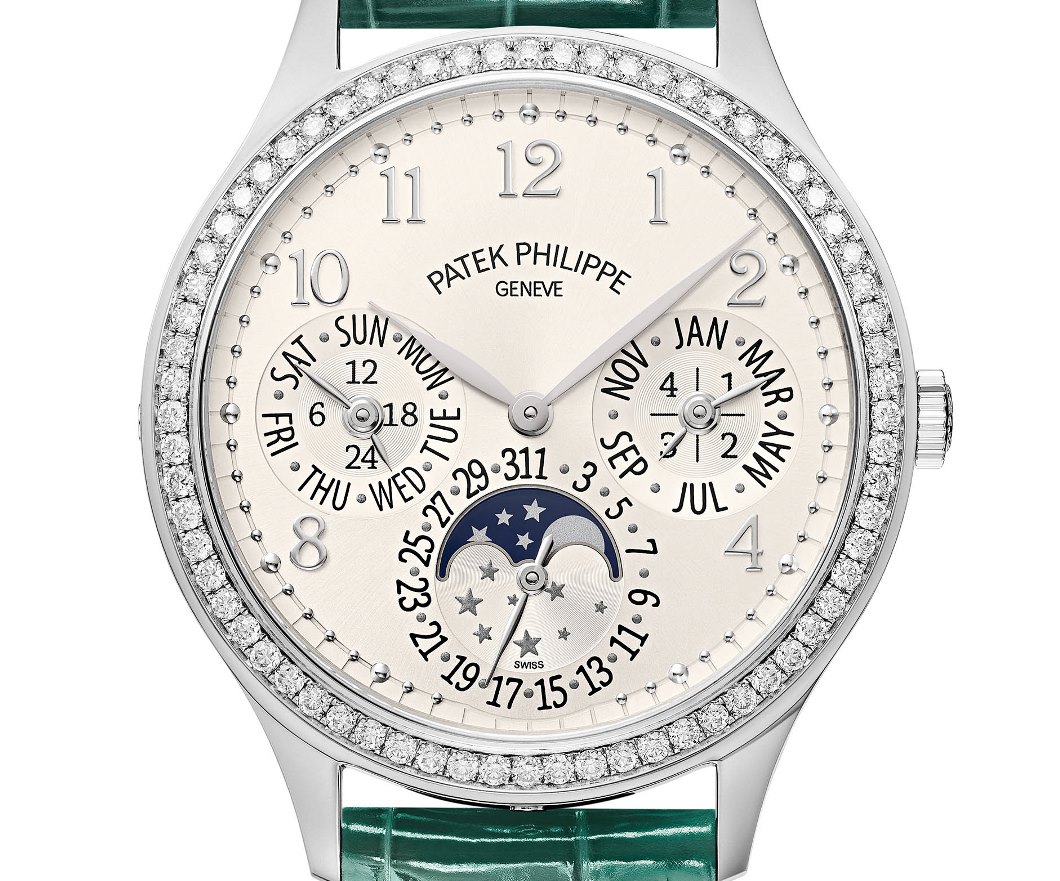
In order for a Perpetual Calendar to accurately display months with 31, 30 and 28 days and allow for 29 days in February each leap year, the movement must have an incredible mechanical ‘memory’ of four years – or 1461 days. This requires a highly sophisticated mechanism, based on a complex system of levers and cams pivoting around axes.
Perpetual Calendars have been associated with Patek Philippe since the company earliest days. As far back as 1870, owning one of the manufacture’s perpetual calendar pocket watches was a status conferring possession. In 1889, company founder Jean Adrien Phillipe’s flair for mechanical invention was recognised, with Swiss patent No. 1018, which protected his design of a Perpetual Calendar movement.
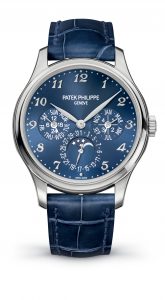 However, by the beginning of the 20th century people began experimenting with a new type of watch, one worn on the wrist rather than in the waistcoat pocket. By the mid-1920s Patek Philippe could no longer ignore the forces of change and began to make wristwatches in regular numbers. By 1924 wristwatches accounted for 8% of their production. While pocket watches were aptly equipped to house a Perpetual Calendar’s extremely complex mechanism, it was a far greater challenge to consider its introduction in the wristwatch’s with a much smaller case, subject to far more wear and tear.
However, by the beginning of the 20th century people began experimenting with a new type of watch, one worn on the wrist rather than in the waistcoat pocket. By the mid-1920s Patek Philippe could no longer ignore the forces of change and began to make wristwatches in regular numbers. By 1924 wristwatches accounted for 8% of their production. While pocket watches were aptly equipped to house a Perpetual Calendar’s extremely complex mechanism, it was a far greater challenge to consider its introduction in the wristwatch’s with a much smaller case, subject to far more wear and tear.
Ever the champions of innovation, Patek Philippe rose to the challenge and in 1925 introduced the world’s first perpetual calendar wristwatch, the Ref. 97 975. Remarkable, with a quartet of sub-dials symmetrically placed like the points of a compass and blue-steel ‘spade’ hands tracing the time around the elegant dial, the Ref. 97 975 established the foundations of Patek Philippe’s position as master of the complicated wristwatch.
Fast forward 93 years and the Perpetual Calendar remains as popular as ever and in the current collection there are two main ways of reading the dial. On the Royal-blue sunburst face of the Ref. 5327G, the day, date and month are perfectly legible on three subsidiary dials. Alternatively, the rose gold Ref. 5496R, displays the day and month in apertures at 9 and 3 o’clock, while a retrograde hand traces the date across the silvery opaline dial.
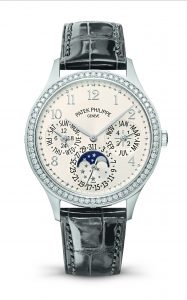 Another piece of particular interest is the Ref. 7140G, Patek Philippe’s answer to recent increased demand for Ladies mechanical watches, with Grand Complications. On the Ref. 7140G, or Ladies First Perpetual Calendar, three subsidiary dials display the date across a silvery, sunburst surface, outlined by the feminine touch of 68 exquisite diamonds. The shiny grey alligator strap can be exchanged for an eye-catching turquoise which perfectly accents the dial’s delicate glimmer.
Another piece of particular interest is the Ref. 7140G, Patek Philippe’s answer to recent increased demand for Ladies mechanical watches, with Grand Complications. On the Ref. 7140G, or Ladies First Perpetual Calendar, three subsidiary dials display the date across a silvery, sunburst surface, outlined by the feminine touch of 68 exquisite diamonds. The shiny grey alligator strap can be exchanged for an eye-catching turquoise which perfectly accents the dial’s delicate glimmer.
At this year’s Baselworld, Patek Philippe launched the Perpetual Calendar Ref. 5740/1G, the first watch in the iconic Nautilus collection to house a Grand Complication. The correctors are ingeniously integrated into the Nautilus case design, the slender style of which lends itself perfectly to the famous ultra-thin calibre 240 Q, making the 7140/1G, at only 8,42mm in height, the thinnest Perpetual Calendar Patek Philippe have ever made. No recent development from the manufacture better demonstrates the Perpetual Calendar’s enduring appeal.
To view and try on these pieces, speak to in-house specialists and learn more about the unique history behind each design visit the Patek Philippe Salon at 16 New Bond St, Mayfair, London W1S 3SU.





